Shimano’s 12-speed XT M8100 groupset was first launched in May 2019 along with the SLX M7100 12-speed groupset, neither of which have been updated since.
Headline features on the XT M8100 groupset include a wide-ranging 10-51t cassette with hardened alloy lowest gear sprockets and Hyperglide+ technology, a multi-release and two-way release shift lever, a Shadow RD+ rear derailleur with on/off switchable clutch and a Hollowtech II crankset.
XT M8100 groupset headline figures
- Total weight (including 170mm cranks with 30t chainring, rear derailleur, 116 link chain, 10-51t cassette and shifter): 1,823g
- Total price (including 170mm cranks with 30t chainring, rear derailleur, 116 link chain, 10-51t cassette and shifter): £566.94 / $611.94 / AU$1,100
Arguably, Shimano’s XT 12-speed drivetrain is one of the best performing mechanical offerings out there, especially when you consider, comparatively, it won’t break the bank.
Shimano XT M8100 groupset details and specifications
Although we've covered the groupset’s specs and details extensively before, I’m going to run through some of the top-level tech as context for the review.
Shimano XT FC-M8120 crankset with 30t chainring specifications
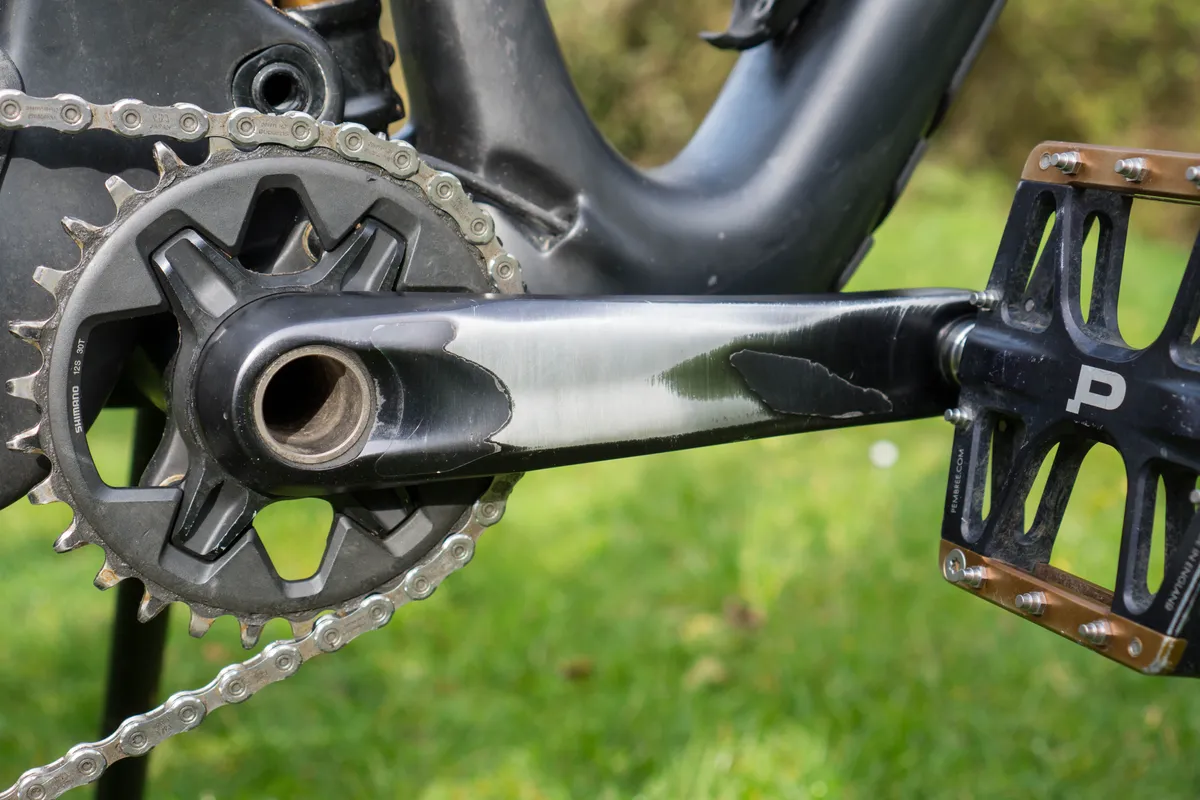
The XT FC-M8120 crankset features Shimano’s Hollowtech and Hollowtech II technology, where the crank arms are hollow-forged to decrease weight but maintain stiffness, and the bottom bracket axle is integrated into the right-hand, driveside crank arm, furthering weight reduction.
Hollowtech II bottom bracket axles have a 24mm diameter and work with all of Shimano’s MTB outboard bearing bottom brackets.
The XT M8100 cranks are available with chainline, Q-factor and bottom bracket width options to suit almost all modern mountain bikes. The crank arms come in 165mm, 170mm and 175mm lengths, too. I tested the 1× crankset, but a 2× XT crankset is still available from Shimano.
The XT-level cranks can be fitted with either a 28t, 30t, 32t, 34t or 36t chainring (in 1× configuration), all of them with Shimano’s Dynamic Chain Engagement+ technology. This is Shimano’s proprietary name for ‘narrow-wide’ teeth, where the chainring’s teeth alternate in thickness and shape to ‘grip’ onto the chain.
Because the cranks and chainring use Shimano’s own direct-mount system, chainrings from different Shimano model ranges are compatible.
My XT FC-M8120 test cranks (170mm arms, without chainring) weighed 541g on my scales. The M8100 SM-CRM85 30t chainring I tested them with weighed 117g.
Shimano XT SL-M8100-R shifter specifications

The XT-level SL-M8100 shift lever is a technological step up from the Deore M6100 and SLX M7100 offerings and features some crucial differences that should vastly improve feel and performance.
Rapidfire Plus – where three downshifts can be made with a single push of the cable-pull lever – features and is found on the majority of Shimano’s shifters including Deore, SLX and XT.
Two-Way-Release also features on Deore, SLX and XT. This is where the cable-release lever can be operated by either a finger or thumb pushing it either away or towards the rider. However, the XT SL-M8100 shifter’s cable-release trigger can shift two gears with one push of the lever – this is dubbed Multi Release – and is one of the key differences between the lower ranges and XT.
The release lever also features Instant Release where the spring is released as soon as the lever is actuated – there’s no free stroke. This should lead to quicker upshifting and can help to improve the feel of the shifter’s actuation. The XT SL-M8100 shifter is available in bar clamp and I-Spec EV versions.
My XT SL-M8100-R shifter (with bar clamp and factory-supplied inner cable) weighed 135g.
Shimano XT RD-M8100-SGS rear derailleur specifications
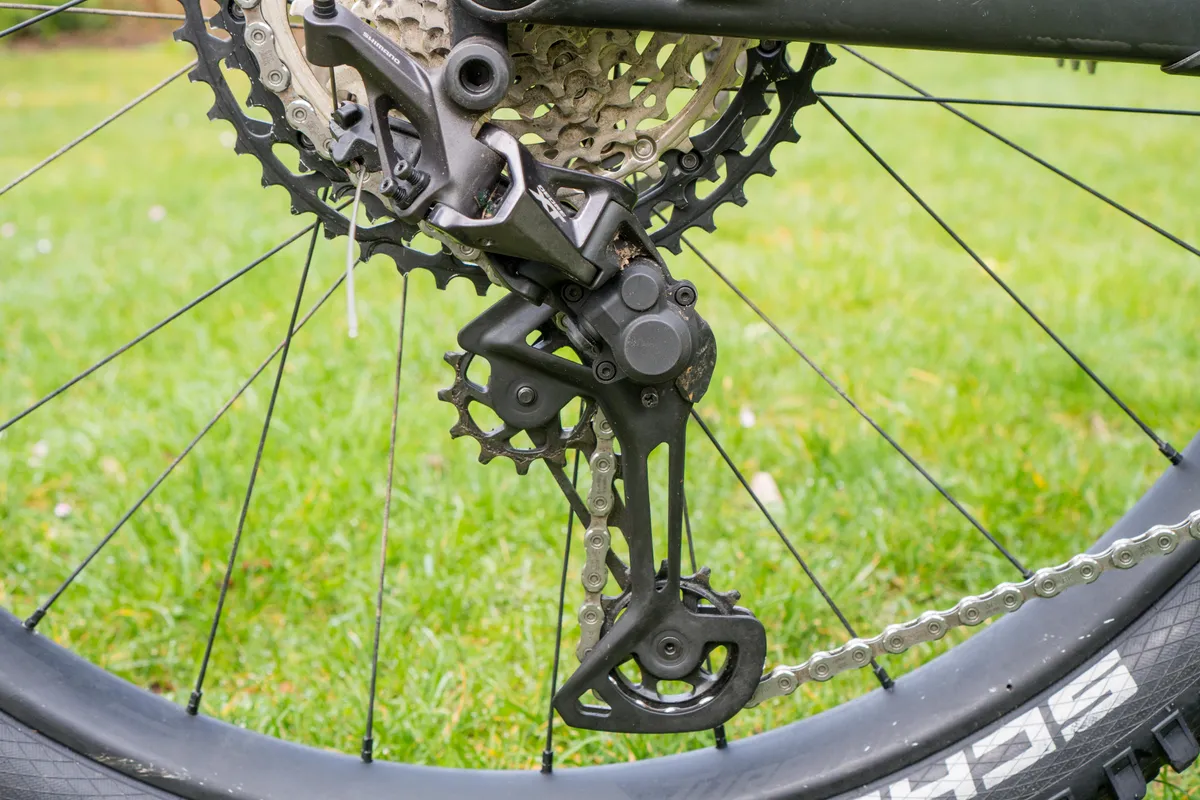
Like all of Shimano’s 12-speed rear derailleurs, the XT RD-M8100-SGS uses the Shimano Shadow RD+ design with a low profile shape to reduce the chances of it hitting the chainstays in rough terrain. It also has an on/off switchable and adjustable clutch mechanism to help improve chain control and increase shift performance.
It has been designed to be used with Shimano’s Hyperglide+ chain and cassette, too, which should further help improve shifting performance.
Finally, there is a bumper between the cage and main knuckle to help reduce noise created by cage movement.
The XT RD-M8100-SGS is compatible with a maximum 51t cassette sprocket and a minimum 10t cassette sprocket. It has fluoric coated link bushings (the parts that hold the derailleur together) to help improve the smoothness of the derailleur’s movement and features sealed jockey wheel bearings on both wheels.
My test sample XT RD-M8100-SGS weighed 283g on my scales.
Shimano XT CS-M8100 cassette and Shimano XT CN-M8100 chain specifications
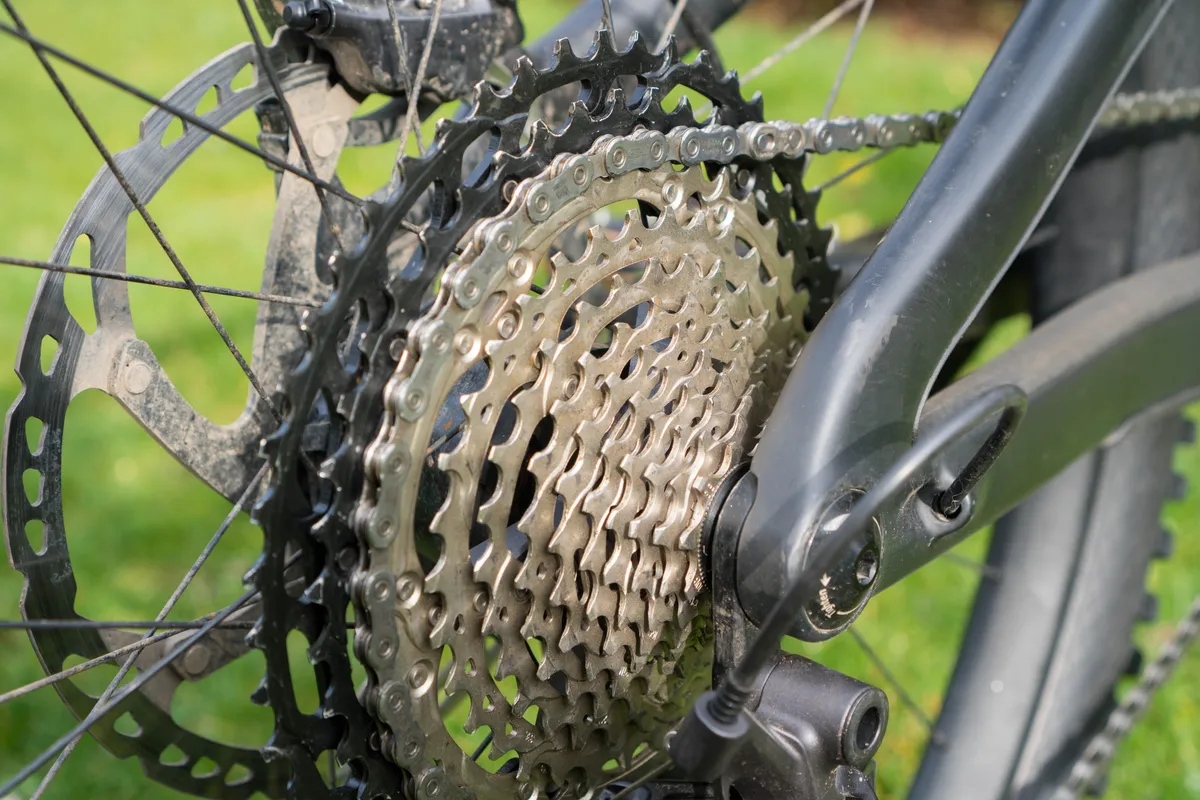
The Micro Spline freehub standard is universal across Shimano’s 12-speed drivetrains – with XT being no exception – and makes it possible to use cassettes with a 10t smallest sprocket.
The M8100 series cassette is available in two combinations: one with 10-45t range, the other a 10-51t range. The 10-51t range cassette I tested has the following ratios: 10t, 12t, 14t, 16t, 18t, 21t, 24t, 28t, 33t, 39t, 45t, and 51t.
The CS-M8100 uses a beam spider construction, where the seven lowest gears (i.e. biggest sprockets) are pinned to an internal spider and make up one piece. The highest five gears are separate rings, installed onto the hub in order with spacers between each one.
The lowest two sprockets are made from aluminium (SLX has only one 51t aluminium sprocket and Deore has none) to help reduce weight.
My 10-51t cassette weighed 475g.
It features Hyperglide+ technology which helps to improve chain engagement and retention, but most importantly allows for on-power gear shifting and reducing shift times, but only when paired with a Hyperglide+ chain.
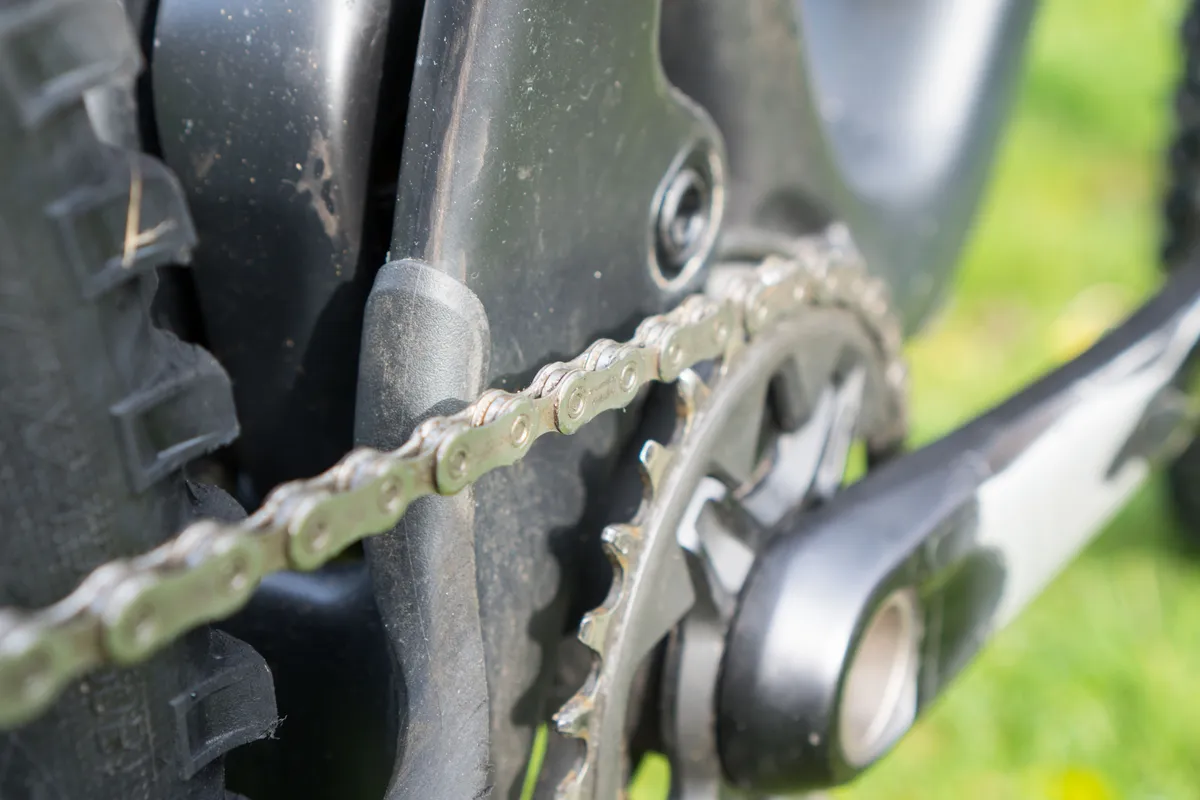
Not only does the CN-M8100 chain have Hyperglide+ tech – to access that smooth, on-power shifting – it also has Dynamic Chain Engagement+ like the chainring to help reduce dropped chains.
The 116-link CN-M8100 chain with quick-link weighed 257g.
Shimano XT M8100 groupset compatibility details
Each component of the M8100 XT groupset has been designed to work best as an ensemble, with tech like Shimano’s Hyperglide+ and Dynamic Chain Engagement+ combining to create the best shifting and chain control.
There is cross-compatibility across the Shimano range, however, and it’s more than feasible to use Deore cranks with an SLX chainring, an XTR derailleur and an XT shifter with SLX cassette and XTR chain.
For full details on inter-groupset compatibility, refer to Shimano’s very detailed charts.
Third-party products are available and will work with Shimano kit – for example chains from KMC or chainrings from Race Face – however, they might not have the same level of integrated technology as a full-house Shimano setup.
Be sure to check whether your hubs are compatible with Micro Spline freehub bodies before going down the 12-speed Shimano route. Although most hubs are now available with a Micro Spline freehub, some aren’t. Also factor in the cost for a new freehub body – prices can range from £30 up to £200.
Shimano XT M8100 groupset installation and set up
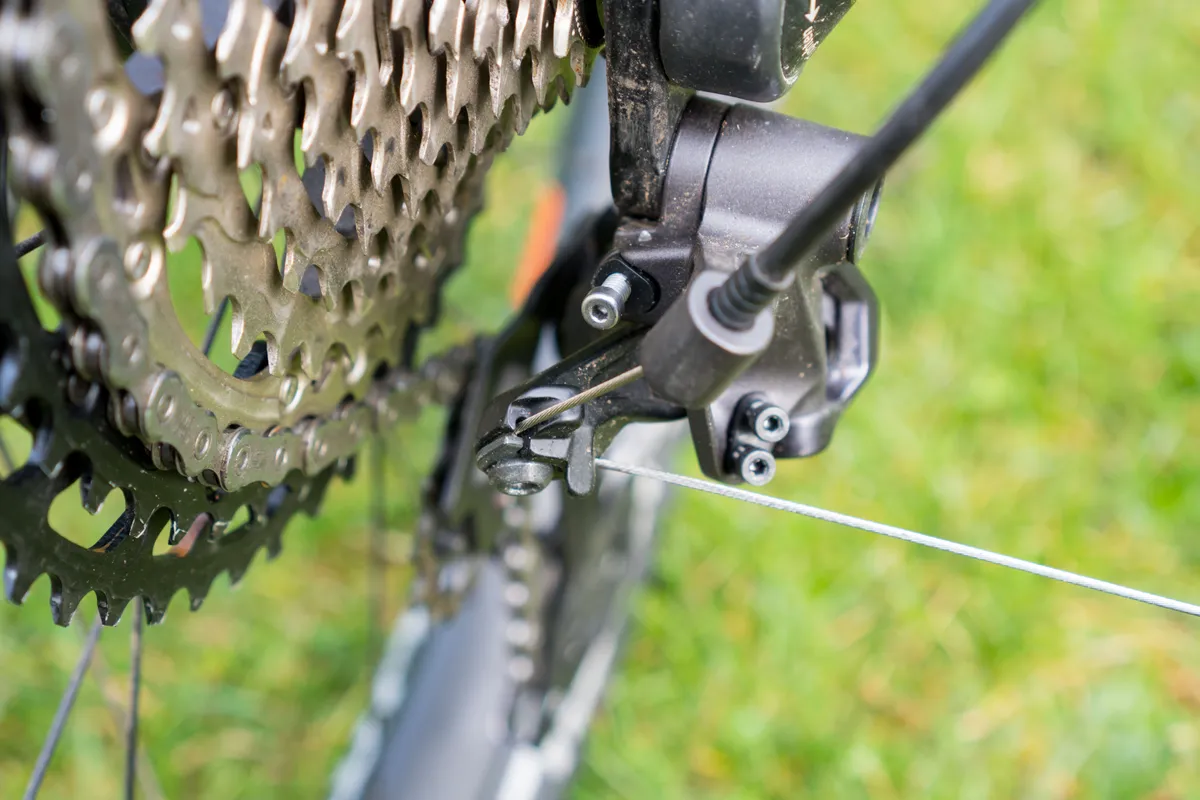
Installation of the Shimano XT M8100 groupset was relatively easy and followed a similar procedure to most other products on the market. There were a few steps that needed to be precisely executed, though.
If you have chosen to buy a larger Q-factor pedal crank – because your bike requires it or you prefer it – then spacers (supplied) will need to be installed on the bottom-bracket axle in the correct orientation with the rubber seal facing the bottom bracket. This is crucial to provide the correct sealing and fit for the cranks.
To install or remove a chainring, a Shimano-specific tool (TL-FC41) is needed, although this is usually supplied in the box with an aftermarket set of Shimano cranks. Tools cost roughly £20 to buy on their own.
The cassette’s smallest sprockets – those that are individually fitted to the freehub body – have small spacers between them. The spacers are sprocket-specific and need to be installed in the correct order for the cassette to work.
The chain needs to be installed in the correct orientation too, with the stamped Shimano writing on the outside and the quick link installed with the small arrow indicating the direction of the chain’s rotation.
Chain length also needs to be adjusted as per Shimano’s instructions. This meant the chain was on the longer side of my preferences, especially in the highest cassette sprocket, even with the b-tension set to Shimano’s guidelines.
Because the derailleur has a vertically positioned cable port, a fairly large loop of gear cable was necessary to avoid reducing shifting performance. However, bikes with different cable routing might not need as big of a loop.

Failure to follow these steps will lead to poor performance and they’re a crucial part of Shimano XT’s installation process.
Setting up the drivetrain was easy. Cable tension needed to be little more than finger tight and clamped up by the derailleur to access almost faultlessly indexed gears. The shifter cable tension barrel adjuster required little fiddling to fine-tune the indexing.
The derailleur’s limit and b-tension screws use 2mm Allen heads, making them fiddly to use and easy to round out if care isn’t taken.
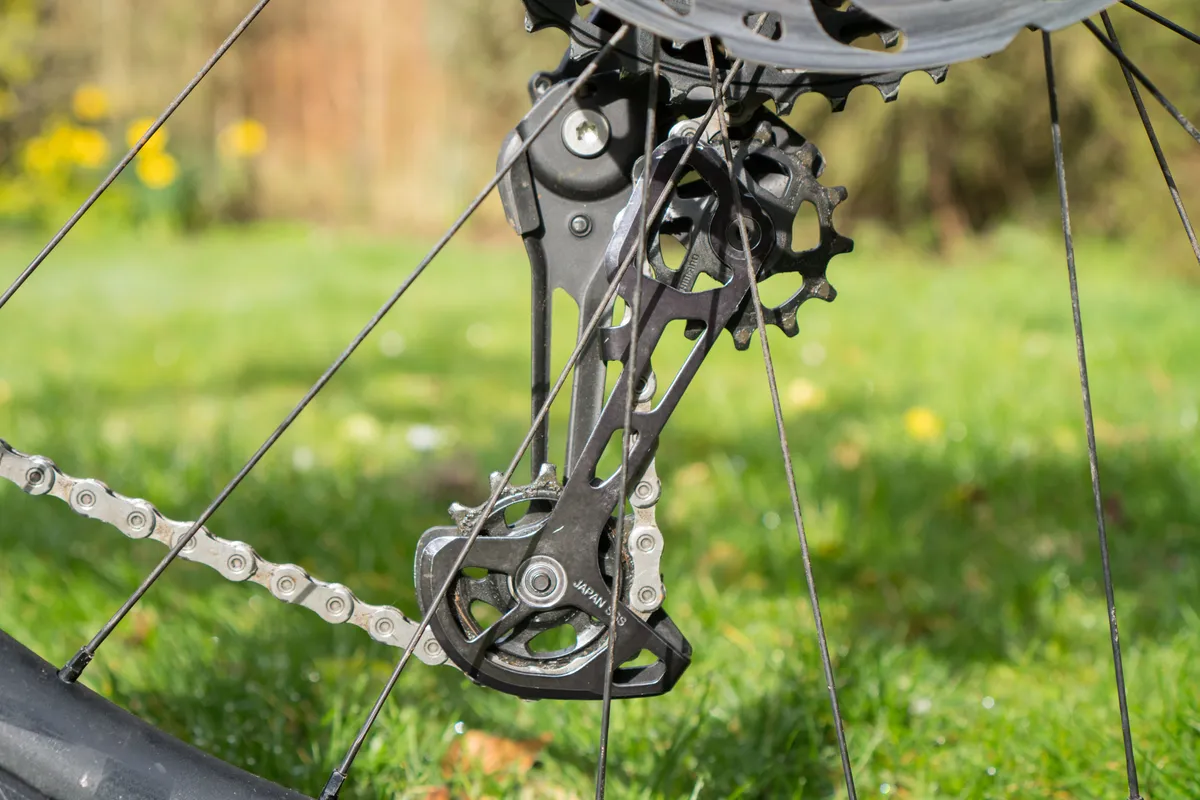
Thanks to a guide on the inboard side of the derailleur’s cage, b-tension was also easy to set. Incorrectly set b-tension caused shifting to be slow and stutter but didn’t stop the derailleur from eventually moving gears. Take care to make sure the marker line is in the correct position.
Shifter installation was also easy and the clamp’s location in relation to its body and paddles meant that adjusting it to my preferred position on the bar posed no problems.
Shimano XT M8100 groupset performance
I’ve tested the Shimano XT M8100 groupset on several bikes including my Yeti SB165 long-term test bike, my personal Marin Alpine Trail XR, and a friend’s bike too, putting in some gruelling kilometres.
Conditions have been brutal during the test period, ranging from ice-covered DH runs and axle-deep mud bogs to spring-like dust and sharp, loose rocks. It would be fair to say it has had a hard time on the trails.
Shimano XT RD-M8100-SGS rear derailleur performance
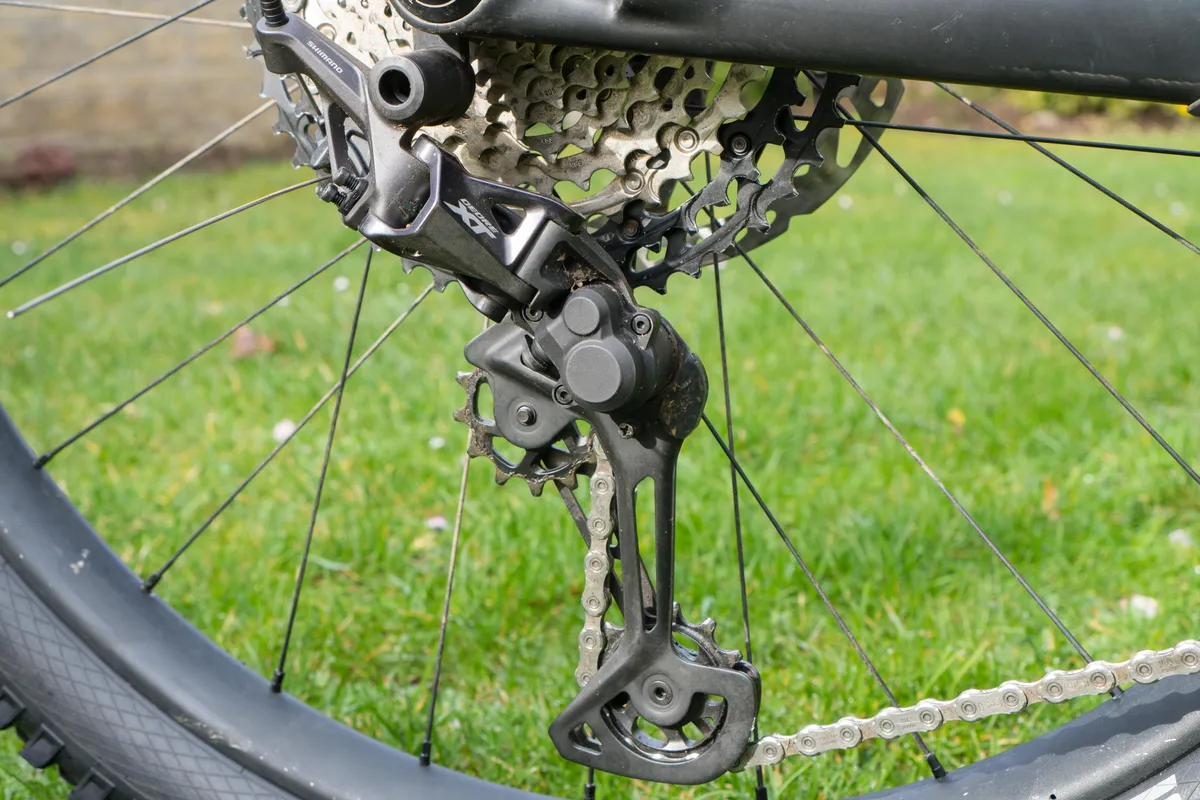
Given how long Shimano recommends the chain needs to be, the derailleur did an impressive job of quietening general drivetrain noise, and chainslap was impressively controlled and limited even over rough and gnarly terrain.
Further testimony to the clutch’s strength was the chain never dropping down the cassette during freewheeling or backpedalling on bumpy and harsh trails.
The clutch’s factory-set tension didn’t appear to interfere with shifting quality either, even though it offered fantastic stability, which further impressed me. It is possible to increase clutch tension, should you wish.
The derailleur’s action throughout the gears was impressively smooth, and there never appeared to be any hesitation or sneezing no matter how muddy, snowy or even icy its parallelogram or jockey wheels got. The way it shifts is best described as crisp and decisive and it did not once miss a shift.
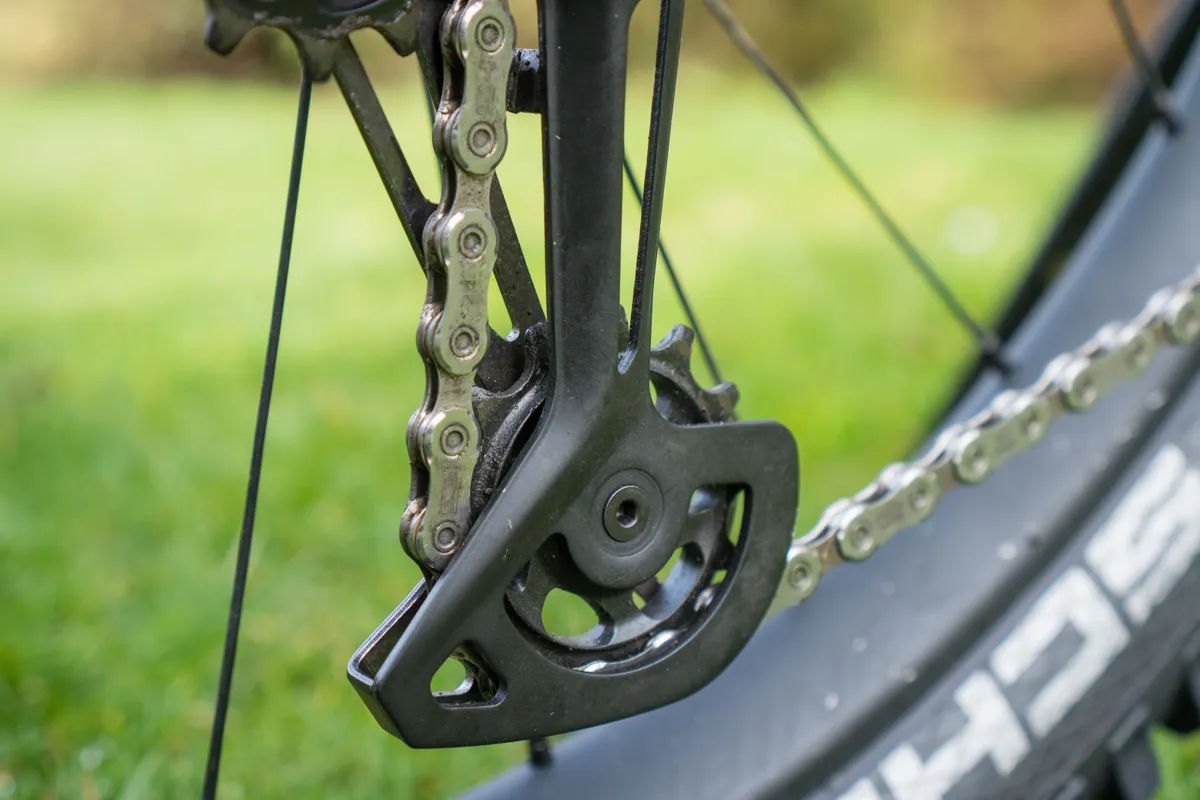
Shifting under power felt effortless at the lever end, with no extra force required to get the derailleur to change gears compared to if I let off the pedals. Through the pedals, some tension could be felt as it pulled the chain across the cassette, and at times a small amount of noise was made, but it always shifted reliably and there were never any skips or loud clunks.
The derailleur didn’t suffer any performance-reducing damage during the test period; however, I have previously broken an XT M8100 derailleur at the main pivot on an electric mountain bike. I believe this to have been an isolated incident rather than a reflection of XT’s quality, though.
Shimano XT SL-M8100-R shifter performance
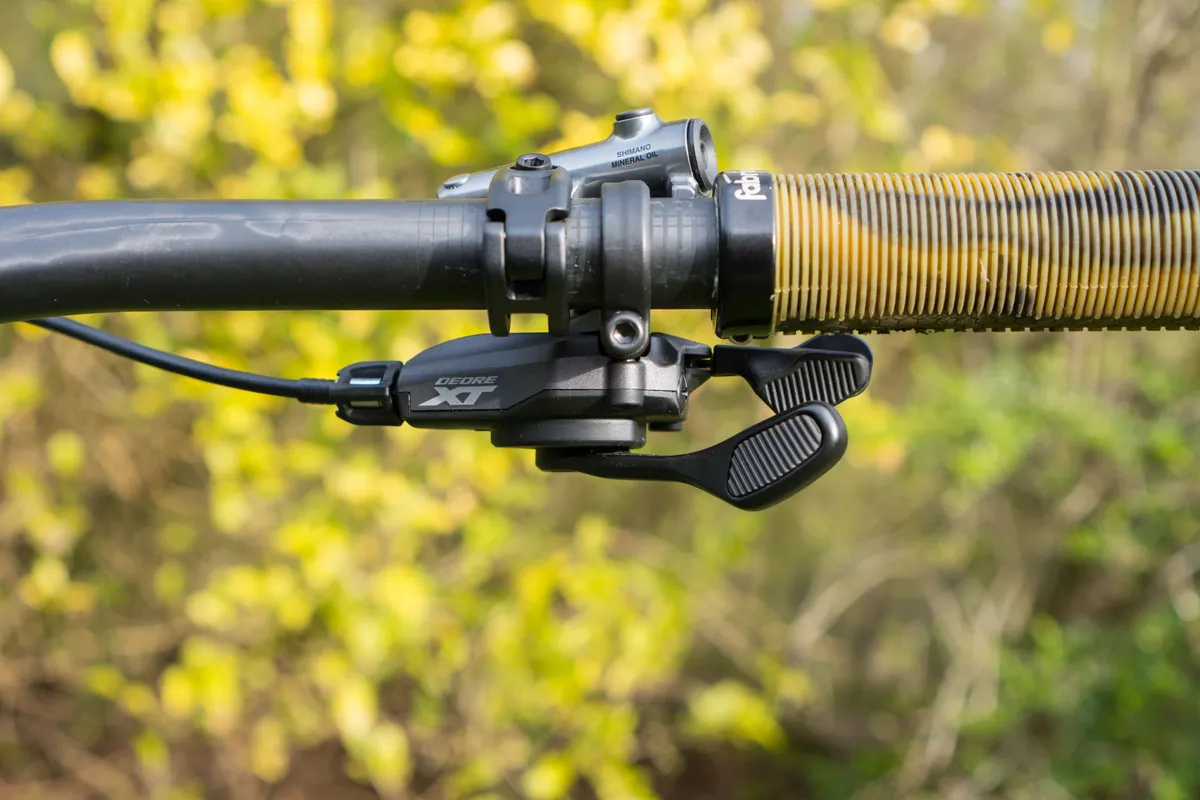
The cable-pull lever’s travel is short and easy to operate, each shift feeling well-defined with a positive click as a gear is engaged. Double and triple shifts feel equally positive and don’t require additional force to engage. The crispness combined with the lightness of the XT shifter makes it feel truly high-end.
The up and down shift paddles are well-positioned and shaped, and are virtually identical to Deore, SLX and XTR paddles. The shifter’s position adjustability (especially with I-Spec mount) and ergonomic excellence make this continuity across the range a true industry benchmark for shifters.
Although I said in my Deore M6100 review I preferred the single release shifter over a Multi-Release version, I found myself using the XT’s double shift feature more than expected, especially when accelerating downhill quickly. Although I still stand by my previous comment, I see no negatives to the Multi-Release system.

As mentioned previously, the derailleur’s clutch tension didn’t appear to stiffen up shifting performance at all, and the action of the shift lever remained light but positive throughout the test period.
The system appeared to be particularly resilient to weather and use-related degradation. Shift quality remained high despite a careless maintenance routine.
Shimano XT CS-M8100 cassette and Shimano XT CN-M8100 chain performance
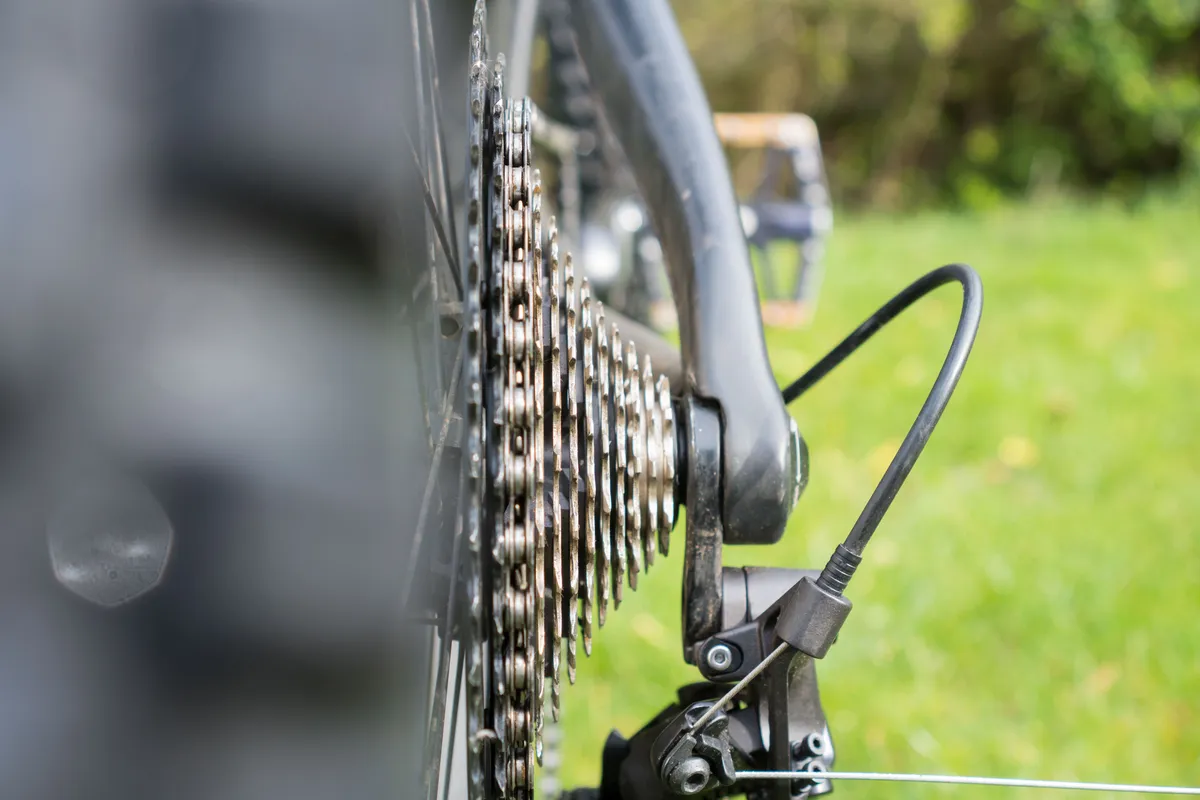
The cassette proved to be impressively resilient to wear, and even after 400km of riding, the sprocket’s teeth are showing no signs of hooking or wear and on-power shifting remains akin to like-new performance.
The cassette block also resisted rusting well and the limited amount of rust that has appeared after being stored wet or dirty brushed off easily with a quick clean. Some of the black finish on the two aluminium sprockets has begun to wear off, though.
On one occasion I did encounter a creaking between the cassette and freehub body – which others online have also reported experiencing – despite doing the recognised cure of greasing the splines before installation. However, after washing the bike at the end of the ride when the creaking occurred, it never returned, suggesting a bit of trapped dirt was the cause.
The 10-51t cassette’s range proved to be impressively usable, with the gradual steps between the lowest two gears reducing the feeling of significantly needing to increase cadence to maintain climbing speed. This meant I spent more time in the 45t sprocket compared to SRAM’s 42t, and much preferred the smaller jump up to the 51t biggest sprocket on Shimano’s cassette compared to SRAM’s 52t cog.

The chain and cassette work together flawlessly and are pretty much silent in all conditions and in all gears, even when entirely caked in drying-on mud after a full day’s riding.
There was no skipping or jumping either, even when pedalling over rough terrain in high gears. The setup appeared to be especially resilient to trail conditions throughout the test period.
However, much like the M6100 Deore chain, I did snap several CN-M8100 chains after each of them got to around 500km of use.
This suggests the 12-speed Shimano chains have a fairly limited lifespan that could be extended by more rigorous maintenance procedures.
Shimano XT FC-M8120 crankset with 30t chainring performance
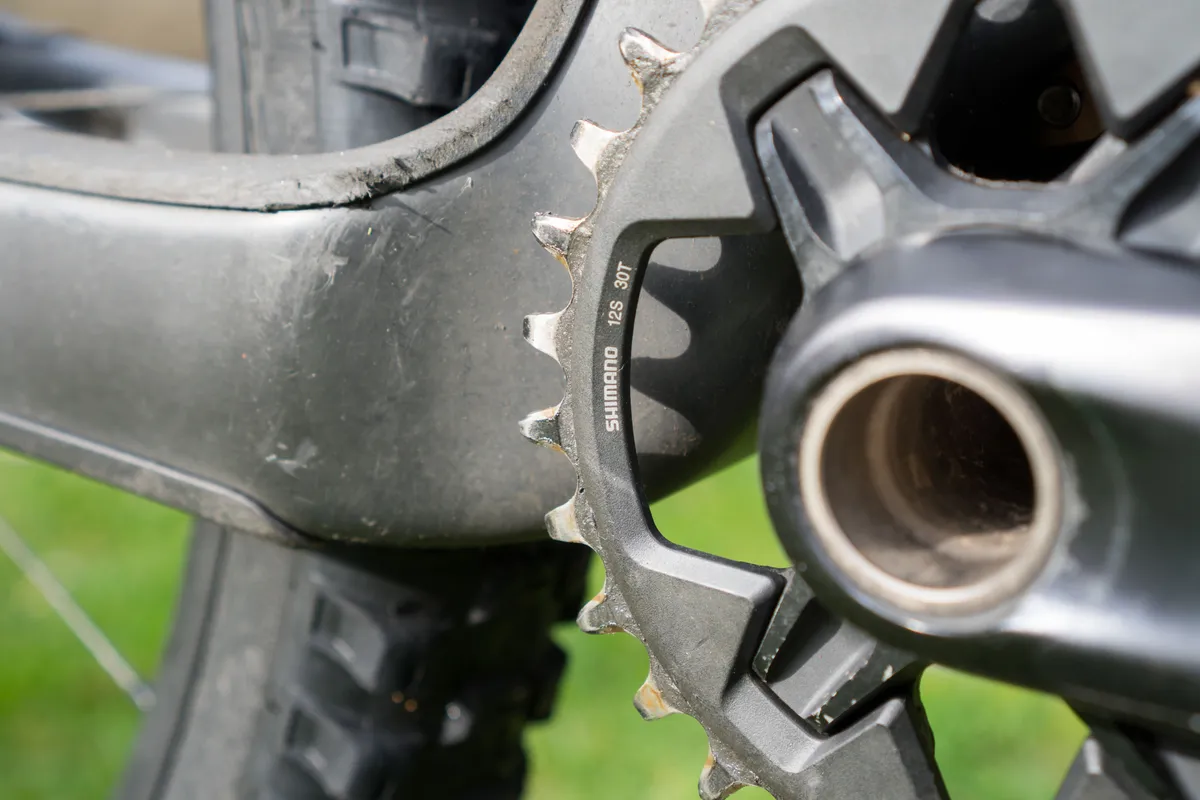
The XT crankset has proven to be resilient against rock strikes and general abuse, not bending or suffering any performance-limiting damage.
Cosmetically they haven’t fared so well, especially on the flat outboard sides where my feet have rubbed away almost all of the finish.
The dark finish didn’t fare well and showed signs of wear from the first ride. For people like me who tend to rub their cranks more than others, it would be great if Shimano offered a silver, raw or polished metal finish so the bikes don’t look tatty straight away. From a performance perspective, they’ve been faultless, though.
Bottom bracket sealing – thanks to rubber O-rings – was excellent and the original bottom bracket is still running smooth after over 800km of wetter-than-average riding.

The chainring has also fared incredibly well over the 800km test period and its teeth haven’t developed any hooks or worn enough to reduce its ability to retain the chain, even without a chain device.
Like the cassette, the chain and chainring work quietly together even once they’ve both got clogged with mud or peppered with rock-filled dirt. The chainring didn’t hook onto the chain as it exited it around the bottom of the ring either.
How does the Shimano XT M8100 groupset compare to SRAM’s GX and X01 Eagle, and Shimano’s Deore and SLX?
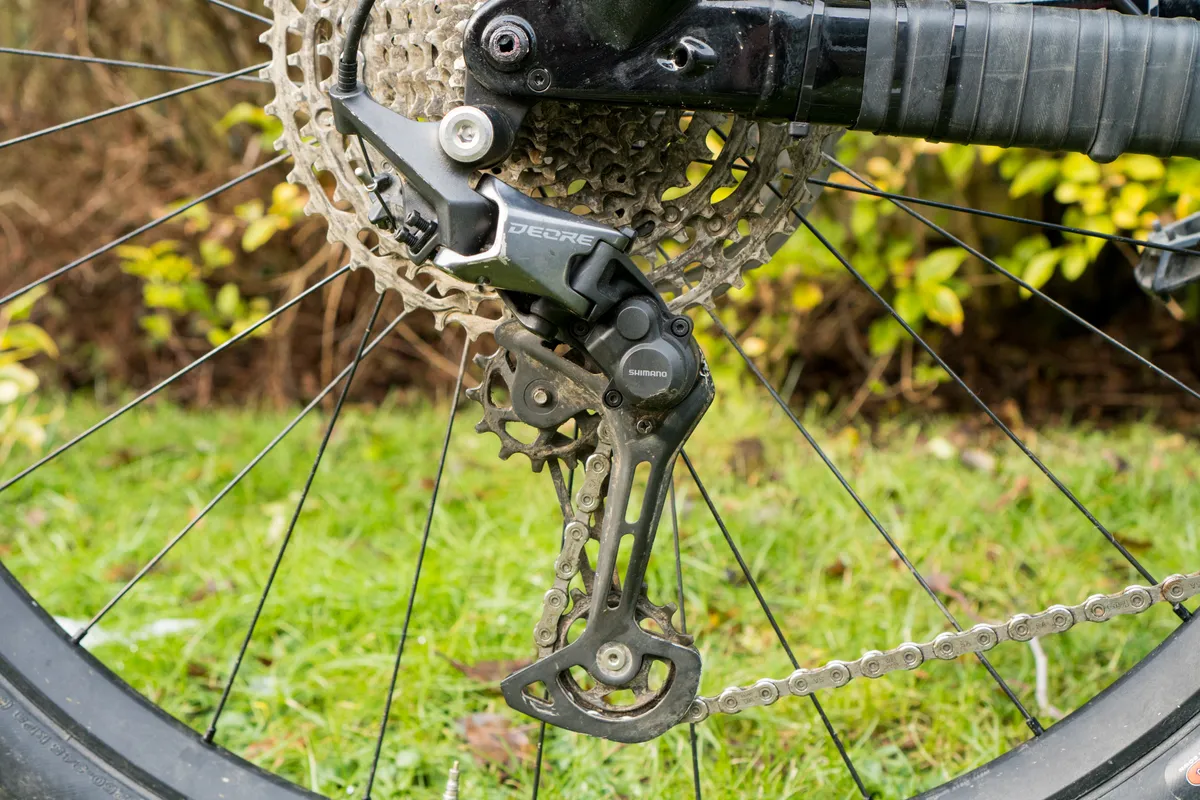
Comparing groupsets like-for-like is tricky. The price of Shimano's Deore XT M8100 is £566.94 / $611.94 / AU$1,100, which pits it roughly against SRAM’s GX Eagle – costing £495 / €555 – but in terms of groupset hierarchies, it sits in a no-man’s land between GX Eagle and X01 Eagle.
Although this isn’t the place to discuss groupset levels – especially not SRAM ones – despite popular belief, SRAM’s X01 Eagle and XX1 Eagle groups are the same level, it’s just that X01 is aimed at all-mountain come enduro riding, while XX1 is more focused on trail and XC riding. This means Shimano’s XTR is both X01’s and XX1’s direct competitor; XT shouldn’t, therefore, stare down the barrel of X01’s loaded gun. Anyway, I digress.

In terms of shifting feel and general finish, XT M8100 is much closer to X01 than GX, but that comes as no surprise given it costs just under £100 more than GX. What’s impressive is how close it is to X01 in terms of performance, especially considering X01’s £1,037 / €1,375 price tag.
From a weight perspective, XT M8100 is 27g lighter than SRAM’s GX and heavier than X01, once again signaling its closest rival as GX. However, Shimano’s XT cassette is heavier than the GX offering by 20g, where the rest of the components are a few grams lighter.
I personally preferred the ratios of Shimano’s 10-51t cassette compared to SRAM’s 10-52t offering, but that might not be the same for you and with a 30t chainring, the extra tooth might help you climb even trickier ascents.
Both brands run into freehub body replacements at this level – Shimano needing a Micro Spline and SRAM’s setup necessitating an XD Driver system – so that’s not a concern when comparing them both.
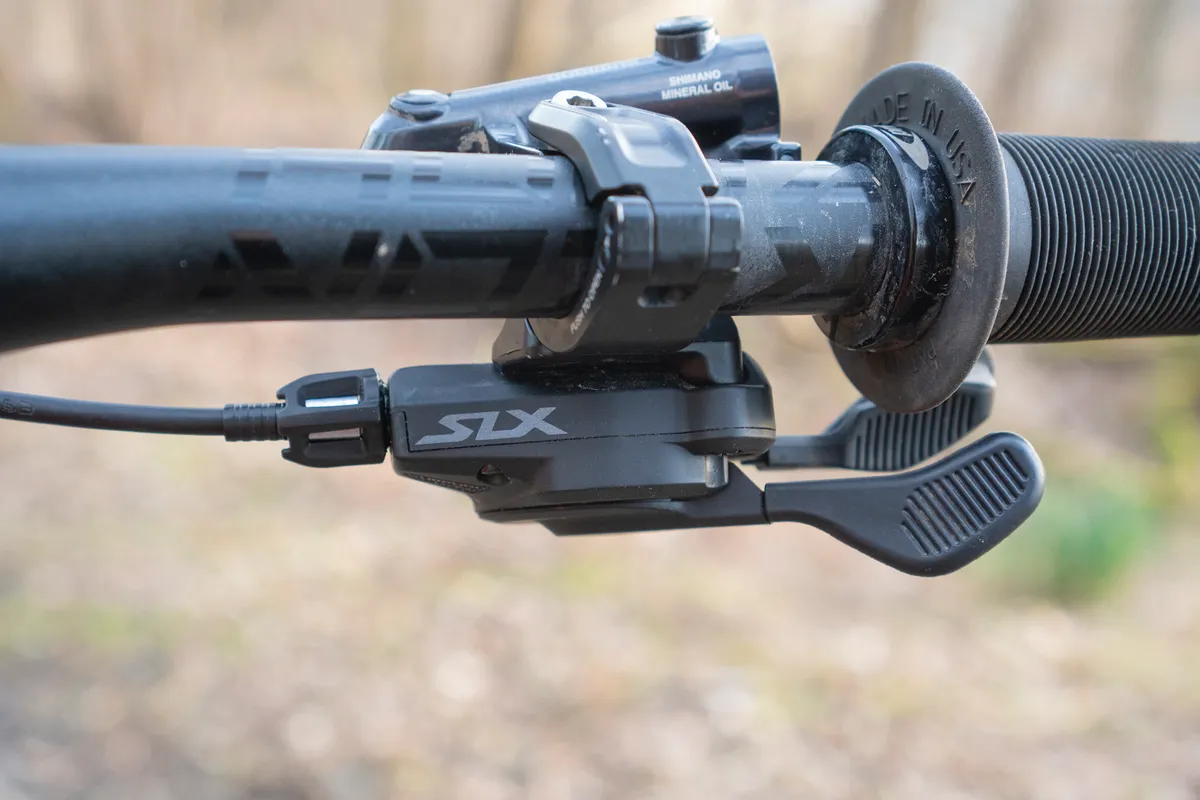
How does XT compare to Deore and SLX? As a whole package, it is a significant improvement over Deore, mostly down to the shifter’s lever feel making the biggest gains.
The increase over SLX isn’t massive in terms of feel but unlocking certain technologies – such as Multi-Release and Instant Release – might be important to some.
As for reliability, they all appear to be much of a muchness, and I wouldn’t be able to pinpoint one from another in terms of longevity. Build quality and general tactility are qualitatively better on Shimano’s XT compared to Deore and SLX, but this doesn’t necessarily equate to an increase in robustness.
Weight-wise, there’s a 400g difference between Deore (2,248g) and XT. SLX and XT are closer, with the former weighing 1,846g and the latter 1,823g, making it hard to justify the extra expense of XT kit if weight per pound, dollar or euro spent is your only concern.
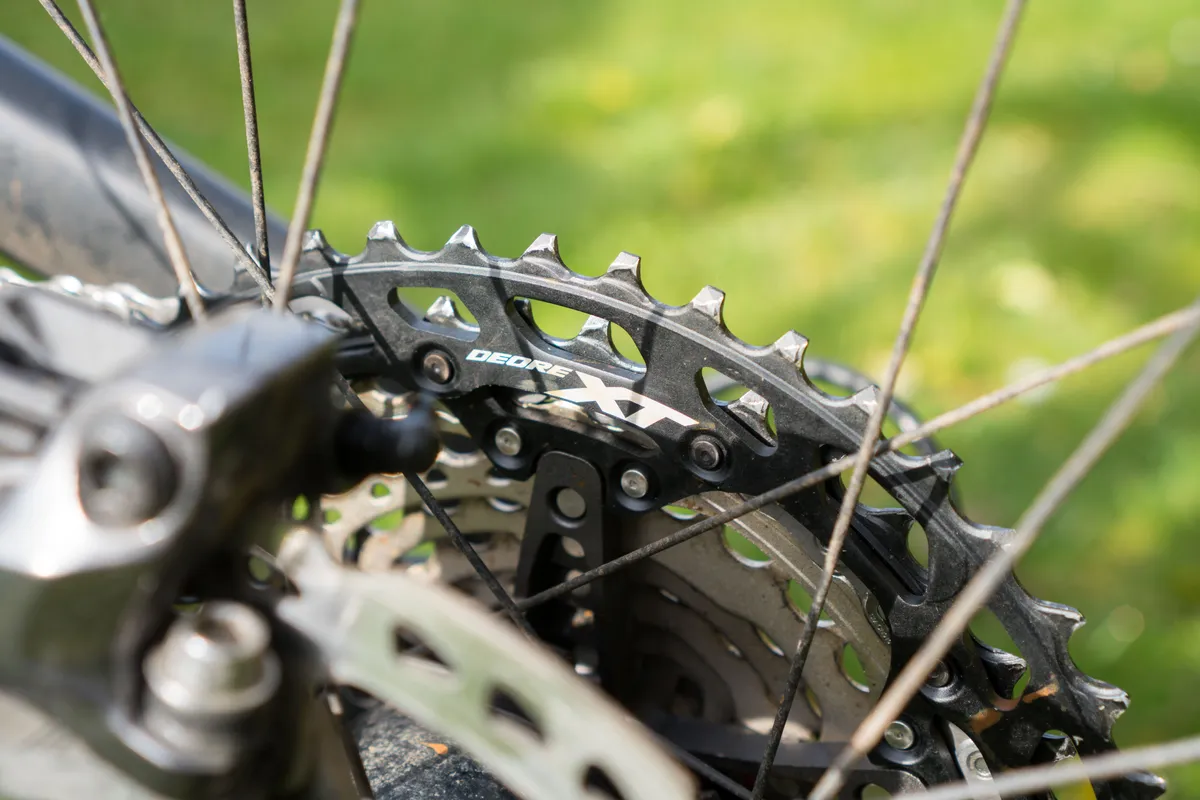
If it was my cash – and I’d decided to go for Shimano – I would buy an XT M8100 shifter, cassette and cranks, and pair them with a Deore M6100 chain, derailleur and SLX M7100 chainring (because Deore rings aren’t available on their own) to bring the bespoke system’s total weight to 1,872g and cost to £455.94.
Shimano XT M8100 groupset bottom line
Shimano’s XT M8100 groupset impressed me from the moment I installed it on my test bike. It has a remarkably polished and refined finish that exudes more quality than its fairly reasonable £566.94 / $611.94 / AU$1,100 price tag would indicate.
It has performed faultlessly with reliability in some of the worst conditions it could have been exposed to during a prolonged test period. It has proven tricky to find any significant faults with its installation, setup or performance and if you’re the kind of person who likes a matching full groupset, there’s little I can say to deter you from buying this.
Because Shimano’s tiers of parts perform so well and similarly, and are inter-compatible, I see no reason not to cherry-pick the best bits of XT to create your own super groupset that doesn’t compromise on weight, price or performance, though.
Product
| Brand | Shimano |
| Price | A$1100.00, £566.94, $611.94 |
| Weight | 1823g |
| br_whatWeTested | Shimano Deore XT M8100 |
Features
| Crank options | 1x |
| Speed | 12 |
| Cassette options | 10t, 12t, 14t, 16t, 18t, 21t, 24t, 28t, 33t, 39t, 45t, 51t |
| Chainring options | 28t, 30t, 32t, 34t, 36t |
